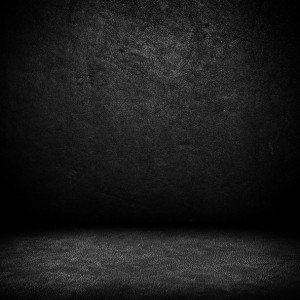Circus of Dreams (Part 2)
By Asher Crispe: November 16, 2012: Category Decoding the Tradition, Inspirations
To Light Up the Night
 According to Sefer Yetzirah every Hebrew month has a letter with which it was created. In other words, every month has a synoptic sign whose semiosis enlivens all of the phenomena of that month. In the case of the month of Kislev, the ‘darkest’ month of the year, the letter is Samech (ס) which means ‘support.’ Interestingly, Cheshvan–the month that immediately precedes Kislev–sets up a conceptual partnership with Kislev in that its choice letter and ‘soul’ sign is Nun (נ). Together Nun Samech spell out the word nes (נס) which means ‘miracle.’ This allusion suggests that the increasing effect of the ‘night’ durning this time of year is optimal for revealing the miraculous.
According to Sefer Yetzirah every Hebrew month has a letter with which it was created. In other words, every month has a synoptic sign whose semiosis enlivens all of the phenomena of that month. In the case of the month of Kislev, the ‘darkest’ month of the year, the letter is Samech (ס) which means ‘support.’ Interestingly, Cheshvan–the month that immediately precedes Kislev–sets up a conceptual partnership with Kislev in that its choice letter and ‘soul’ sign is Nun (נ). Together Nun Samech spell out the word nes (נס) which means ‘miracle.’ This allusion suggests that the increasing effect of the ‘night’ durning this time of year is optimal for revealing the miraculous.
In order to better understand this, we have to tackle a few more implications of darkness on the level of the symbolic order of Creation. The most profound sense of darkness might be termed metaphysical darkness. It reflects the radical privation of the infinite light (Ayin Sof) that brought about the manifest finitude of our natural world. As many of the mystics have indicated, the etymological root of the world olam ‘world’ is the same as that of the word helem ‘concealment.’ Thus, the worldhood of the world refocuses our attention on the limit-experience of a quasi self-contained sphere–that all too familiar black painted orb–while obscuring the most primordial levels of Divinity that have no limit. The infinite is camouflaged in the finite.
All of this is a consequence of the tzimtzum or ‘contraction’ of Divinity whose apparent withdrawal established a primal darkness. While generic darkness symbolizes the confusion of the intellect by means of unknowns (which could be known), this superlative darkness embodies the unknowable, a surplus or excess of Divinity that cannot be assimilated within the confines of the concept nor the datum of the idea. It denotes the radical outside–a place where the mind simply cannot go, the domain of the super-rational.
Despite the risk of interpreting this supernal darkness as an estrangement of the Divine from the world (we could even compare it to God’s own ‘Self-exile’) it also offers as powerful critique of the nature of the world. A dark world, a world that pretends to be devoid of Godliness, is actually just a smoke screen. The natural order, from this highest perspective, is somewhat unnatural. The miracle in the night, so to speak, occurs when darkness itself becomes luminal. The insight that comes from fundamental unknowability illuminates that nature of nature and calls its limitations into question. One of the consequences of this impresses upon us the supernatural foundation of the natural. This duplicity of a ‘hidden nature’ and a ‘nature that hides’ provokes thoughts similar to that of Einstein when he once quipped: “There are only two ways to live your life. One is as though nothing is a miracle. The other is as though everything is a miracle.”
All of this brings us back to the meaning of the letter Nun. Why does it form a covalent bound with the letter Samech? The answer lies in a verse from Psalms 145:13 “God supports (somech from Samech) all of the fallen (noflim from the letter Nun). The sages refer to the letter Nun as the fallen one in part because the final form of the letter (ן) literal descends below the imaginary line that the other letters rest upon when they are written. Graphically it falls the lowest. The fallenness in question reflects an existential state. We could describe it as the acute awareness of the contingency of each Created entity. My contacting of my existence cannot be explained as an act of my own doing. I require assistance. Moreover, would my ‘individuated being’ or my ‘being an individual,’ be ‘left alone’ I would experience a total collapse. I am unable to support myself under the weight of my own existence.
The individual who most personified this quality of existential fallenness was King David who was said to have been a bar nafli or ‘miscarried’ soul. David would experience himself at every moment collapsing on the inside, unable to go on living let alone play the part of a king. Additionally, we should note that the letter Nun is the fourteenth the Hebrew letters. 14 is the numerical equivalent of Dovid (David) in Hebrew. Suffering from persistent existential fatigue, David places his trust and reliance on God who he experiences miraculously lifting him up and supporting him so that he has the strength to live. God gives him the ‘courage to be.’ David’s adversity is not just within life but from existing itself. We cannot bear the difficult burden of being in solitude but rather subsist from the Divine hand that props us up, from the arms that catch us when we are blinded and plummeting off the ladder into the unknown in a trust fall. He needed (we all need) the support from something greater than ourselves to arrest and reverse the fall. Our Nun must be joined with our Samech. ‘Feeling gravities pull’ defines the natural order which is refreshingly suspended as our ‘personal velocity’ shifts and receives a boost so that we may maintain our altitude.
When we lose consciousness and thereby becomes detached from our true situation and immediate surroundings, we are said to have ‘fallen’ asleep. The challenge is to let loose my grip on reality, to abandon the reassurance of waking clarity, so that I may drift into the abyss (tahom b’atzmi as it is called in Chassidut) of my unconscious. Only if I am confident that I am enveloped by a force shield that will shelter me while I am totally exposed and most helpless, can I learn to let go. Accepting that I have to repeatedly ‘lose myself’ temporarily in order that I may be restored anew and lifted back our of my slumber, is the image of the Samech linking to the Nun.
 Yet, this sense of support comes from the outside. We find this external support concertized in the Torah (Genesis 28:11) when it describes Yaakov/Jacob arranging stones around his head before he when to sleep. More than outer projection, the support has to penetrate into the oneiric experience and help us through the dream. Likewise, getting through the dream does not end at the sound of a siren or alarm bell. It means more than dreaming the good dream. We are only (fully) pulled from the spell of the unconscious when we process the dream through the filter of the conscious mind–that is: when we interpret it. Ripping the lid off our dream and pouring honey upon its contents is the final installment of our ‘aid’ package. Since the dream cannot be said to be a discovery of predeterminate meaning, but rather lingers as long as it is uninterpreted in a indeterminate state (all the while threatening to cave in itself) additive interpretive sweetener constitutes its final elevation. If done correctly it will leave us rested from our sleep and uplifted from our dream.
Yet, this sense of support comes from the outside. We find this external support concertized in the Torah (Genesis 28:11) when it describes Yaakov/Jacob arranging stones around his head before he when to sleep. More than outer projection, the support has to penetrate into the oneiric experience and help us through the dream. Likewise, getting through the dream does not end at the sound of a siren or alarm bell. It means more than dreaming the good dream. We are only (fully) pulled from the spell of the unconscious when we process the dream through the filter of the conscious mind–that is: when we interpret it. Ripping the lid off our dream and pouring honey upon its contents is the final installment of our ‘aid’ package. Since the dream cannot be said to be a discovery of predeterminate meaning, but rather lingers as long as it is uninterpreted in a indeterminate state (all the while threatening to cave in itself) additive interpretive sweetener constitutes its final elevation. If done correctly it will leave us rested from our sleep and uplifted from our dream.
In Part Three we will being exploring the symbolic significance of the letter Samech equaling the number 60 as our journey into the night continues.
http://www.interinclusion.org/inspirations/circus-of-dreams-part-3/
http://www.interinclusion.org/inspirations/circus-of-dreams-part-1/
Circus of Dreams (Part 2) ,















;)
;)
;)
;)
;)
;)
;)
;)
;)
;)
